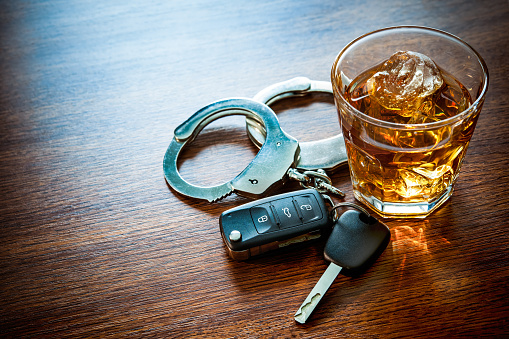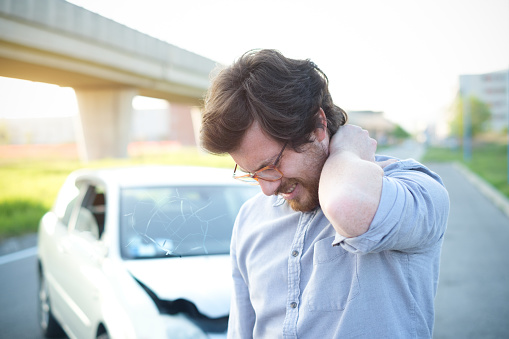
by Charlie Smith | Mar 22, 2018 | Automobile Accident, Blog, Personal Injury, Personal Injury Lawyer |
Being hit by another driver is a terrifying moment, and if alcohol was involved, it can be even more difficult to know how you should proceed. You’ll need to file an insurance claim just like you would in any other accident, but you should also consider working with an attorney. A specialist who is familiar with the laws in your state can help you navigate your insurance policy, seek a settlement from the other party’s insurance, and, if needed, take your case to court. Follow these steps if you’re in an accident involving a drunk driver. Call the Police You’re required to call the police and report an accident in certain situations, such as if a personal injury occurs or there is significant property damage. Regardless of the requirements in your state, however, having police on the scene can help you get insurance information and communicate with the other driver and witnesses. If alcohol is involved, the police report and the officer’s testimony will be vital evidence when you file a claim. Take Notes and File an Insurance Claim Once you’ve confirmed that everyone is safe and you’ve called the police, gather information about the accident. This should include taking photos of the damage and collecting contact information from the other driver and any available witnesses. You should also note the road conditions, the stop lights and other road signs you followed, and the other driver’s condition. You can then report the accident to your insurance company. Your insurer will provide compensation for repairs to your vehicle, medical expenses, and other related costs. Your insurance company will charge the...

by Charlie Smith | Mar 11, 2018 | Blog, Cruise Injuries, Personal Injury |
Getting the care you need at home following an injury can be a difficult process. If you’re hurt while on a spring break cruise, you may have an even harder time understanding your health insurance coverage and getting the treatment that you need. If you’re planning on spending some time at sea this spring, make sure you follow these steps if you’re injured. Report the Accident From slips and falls to more serious events such as assaults, injuries do occur on cruise liners. No matter the severity or type of injury, your first step should be to report the accident to the cruise line as soon as possible. Before you leave the port on your trip, check the company’s policy for reporting and responding to an accident. Do your best to follow these requirements. Finally, take notes about what happened and keep all documents and information related to the injury, such as medical reports. Document the Accident As with any type of injury, you should document the event thoroughly as soon as it’s safe to do so. Take photos if possible, collect witness contact info, and record what led to and caused an accident. You should also note the company’s response and any treatment that you received. Your documentation may be used to help prove that the cruise line acted negligently and contributed to your injury. Seek Medical Attention No matter the severity of an injury, you should seek medical attention to help you document the accident and subsequent damages. Your initiative will also prevent the company from claiming that since you didn’t see a doctor, you must not...

by Charlie Smith | Feb 16, 2018 | Blog, Personal Injury |
Despite evidence that motorcycle helmets save so many lives, only 28 states have helmet laws on the books. Of these 28 states, only 19 require both the passengers and driver to wear helmets, while the other nine states only mandate that the driver wear a helmet. If you live in a state that has motorcycle helmet laws, it’s important to know just how it affects you in case of a motorcycle accident causing injury or death. Knowing the Law in Your State Whether you ride a bike or drive a car, it’s paramount to know every aspect of helmet laws because accidents do happen and you want to be aware of your rights. These laws can affect the outcome of any claims or damages you’re involved in. In 2010, Florida lawmakers amended the Florida Statute so that a motorcyclist may ride a bike without a helmet only under certain criteria. They must be over the age of 21 and have an insurance policy that provides at least $10,000 in medical coverage. If you don’t meet these requirements, it is the law to wear a helmet while operating or riding on a motorcycle. Personal Injury & Comparative Negligence Even if it isn’t mandatory to wear a helmet, if you suffered an injury while not wearing a helmet it can still impact a personal injury lawsuit filed by an injured motorcyclist. This usually falls under comparative negligence, meaning that both you and the other person involved in the accident are responsible for the injuries, often regardless of who actually caused the accident. Florida is a pure comparative negligence state, meaning that...

by Charlie Smith | Feb 16, 2018 | Blog, Personal Injury |
Negligence describes a scenario wherein a person acts carelessly, which results in an injury or property damage to another party. It’s perhaps the most common of the personal injury lawsuits, but it’s also one of the most difficult to prove in a court of law. What Constitutes Negligence? Negligence is the failure to use reasonable care, resulting in damage or injury to another. The most difficult part of negligence cases is determining reasonable conduct. For example, a driver must exercise the same care that a “reasonable person” would in the same situation, which includes driving according to traffic laws and being aware of other drivers and pedestrians. If a driver fails to wear his glasses and injures someone, they can be considered negligent because a “reasonable person” wouldn’t forget to wear their glasses. Reasonable conduct is the basic legal standard for figuring out who is at fault. To ascertain reasonable conduct, both parties must analyze the circumstances of the incident and determine what a reasonable person would have done in the situation. Negligence and the Burden of Proof In claims that are a direct result of accidents or injuries, the burden of proof lies on the plaintiff. To win a case and prove negligence on behalf of the defendant, a plaintiff must prove duty, breach, causation, and damage. This essentially states that the defendant had a certain duty, broke the responsibilities of the duty, caused an injury or property damage, and are liable for damages. Criminal vs. Civil Cases and Negligence One aspect that makes winning a negligence case easier than a criminal case is that you don’t have to...

by Charlie Smith | Jan 20, 2018 | Blog, Personal Injury, Personal Injury Lawyer |
While home insurance policies will cover some personal injury claims, they don’t cover everything. Furthermore, the coverage that they do provide for personal injuries is limited to a certain amount, such as $100,000. Typically, a home insurance policy would kick in to pay for the personal injuries of another for which a member of that household was legally liable. The injury doesn’t necessarily have to occur on the property to be covered either. The existence of a homeowner’s insurance policy can affect a personal injury claim on both ends, whether you’re the plaintiff (the injured party) or the defendant. Understanding Home Insurance Liability Protection Home insurance liability coverage usually has two components: personal liability and medical payments. The personal liability portion pays for claims or lawsuits that are against you, and that stem from accidents (that you or a member of your household caused) on or away from your property, causing bodily injury to others. Personal liability will also cover property damage from such accidents. Liability coverage will pay for legal representation for you if you are sued by the injured party. Keep in mind, though, that this coverage does not apply to injuries caused by intentional acts, auto-related accidents, or business-related incidents. Depending on your policy, personal liability will typically provide at least $100,000 of coverage per incident. With most policies, no deductible is associated with personal liability claims. Medical payments coverage will cover the medical expenses of parties accidentally injured on the covered property, no matter whose fault it is, up to the policy limit. However, medical payments coverage does not pay for personal injuries to members of the household, nor...

by Charlie Smith | Jan 5, 2018 | Blog, Personal Injury Lawyer |
The moments following a serious accident are shrouded in panic. Whether you’re the victim or you simply witnessed a crime, you can easily forget how to respond in an emergency. However, the moments following an accident are often pivotal to the outcome of cases that are settled or go to court. This point is especially true in events involving serious damage to the brain. Symptoms of such harm may not manifest themselves for weeks, and individuals who fail to collect evidence or check in with a doctor may have trouble retroactively remembering these details and pursuing a personal injury claim. If you experience a blow to the head — whether as the victim or as a witness — follow the steps below in order to successfully pursue a traumatic brain injury (TBI) case. Record Details, Including Witness Contact Info Following an accident that causes injury, regardless of whether the damage was done deliberately, record as much information as possible about what happened. Take notes if you can. As you begin to document the event, keep the following details in mind: What happened: Document the nature of the event, such as a sports collision, a car crash, or a slip and fall. List all parties involved: You need the name of the victim and the person who inflicted the damage. Also get contact information from any witnesses who could confirm what happened. The victim’s symptoms: Physical symptoms of a TBI include loss of consciousness or a state of confusion or disorientation, headaches, and vomiting. Sensory problems and cognitive signs may also be present. Record details of these symptoms and any...









Recent Comments